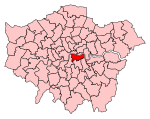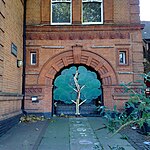City of London Academy, Southwark

City of London Academy, Southwark is a co-educational secondary school and sixth form with academy status, located in the Bermondsey area of the London Borough of Southwark, England.The school was first opened in 2003, and moved to a new building in 2005. The building was designed by Studio E Architects and built by Willmott Dixon. The school is sponsored by the City of London Corporation, along with City Academy, Hackney and City of London Academy Islington. The school has specialisms in Business and Enterprise and in Sport, and the school teaches the non-curricular subject Business Studies, designed to help pupils become entrepreneurs. A unique aspect of The City of London Academy, Southwark is that students pay for their lunches with a Prepaid MasterCard debit card that parents top up using a smartphone app. Students can also pay for their meals with a fingerprint scanner.
Excerpt from the Wikipedia article City of London Academy, Southwark (License: CC BY-SA 3.0, Authors, Images).City of London Academy, Southwark
Abercorn Way, London Bermondsey (London Borough of Southwark)
Geographical coordinates (GPS) Address External links Nearby Places Show on map
Geographical coordinates (GPS)
| Latitude | Longitude |
|---|---|
| N 51.4892 ° | E -0.0647 ° |
Address
City of London Academy
Abercorn Way
SE1 5HE London, Bermondsey (London Borough of Southwark)
England, United Kingdom
Open on Google Maps







